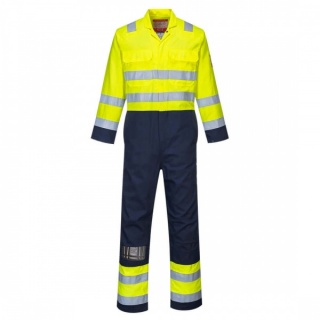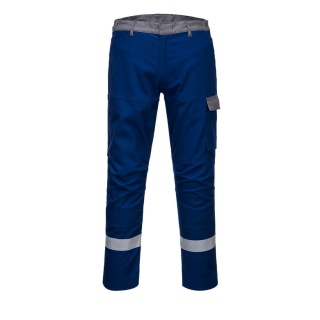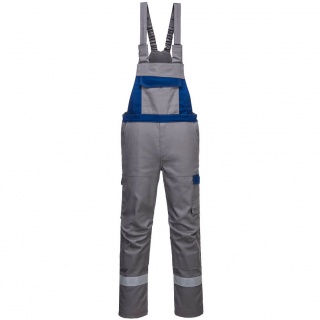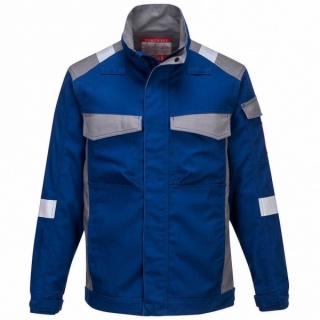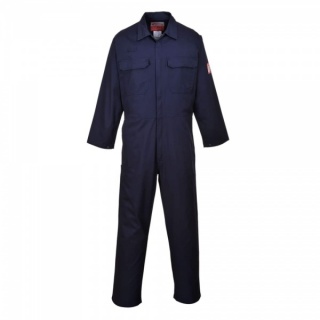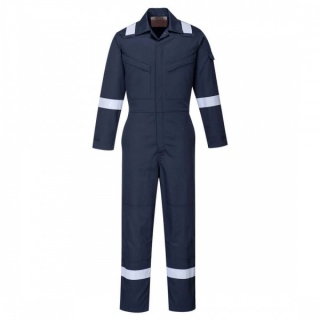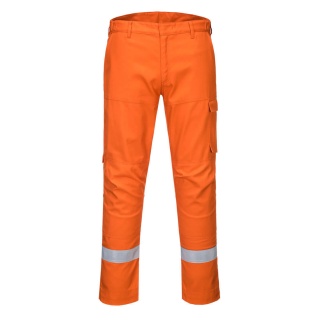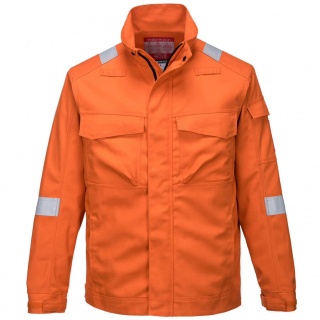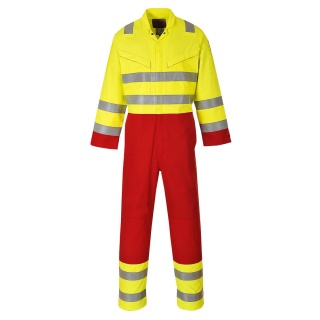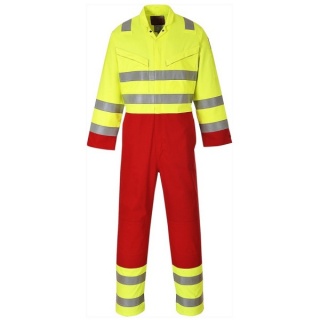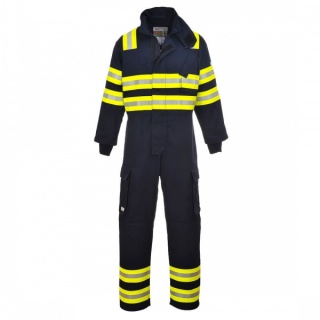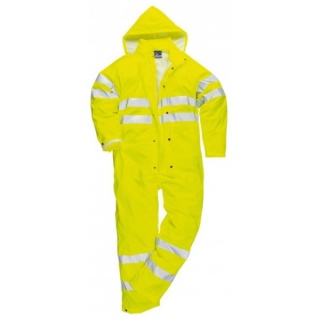Product Technical Information
Standards
- EN ISO 11612 A1+A2, B1, C1, E2, F1
- EN ISO 11611 Class 1 A1+A2
- EN 1149 -5
- IEC 61482-2 IEC 61482-1-1 Elim 11 CAL/CM²
- IEC 61482-2 IEC 61482-1-2 APC 1
- EN 13034 Type 6
- ASTM F1959/F1959M-12 ATPV 16 CAL/CM2 (HAF 83.7%)
Washcare
Documentation
EN ISO 11612:2008
Protective Clothing Against Heat and Flame
The Performance requirements set out in this international standard are applicable to garment, which could be worn for a wide range of end uses, where the is a need for clothing with limited flame spread properties and where the used can be exposed to radiant, convective or contact heat or molton metal splashes.
This test uses standard methods and conditions to predict the performance of fabric/garment in the event of contact with heat or flames. Garment features such as seams, closures and logos must be tested as well as the fabric. Tests must be carried out on pre=treated components according to the manufacturers care label.
Specific Testing is listed below:
- Dimensional Charge
- Limited Flame Spread (A1+A2)*
- Convective Heat (B) – 3 Levels
- Radiant Heat (C) - 4 Levels
- Molten Aluminium Splash (D) – 3 Levels
- Molten Iron Splash E - 3 Levels
- Contact Heat (F) – 3 Levels (Temp 250 Degrees Celcius)
- Heat Resistance at a temperature of 180 Degrees Celcius
- Tensile Strength Must meet a minimum of 300N
- Tear Strength must meet a minimum of 15N
- Bursting Strength
- Seam Strength
Garment Design requires that coverage must be provided from the neck to the wrist and to the ankles.
Optional Testing includes water vapour resistance and manikin testing for overall burn prediction.
*This test must be carried out on fabric and seams.
EN ISO 11611: 2007
Protective Clothing for Use in Welding and Allied Processes
The International standard specifies minimum basic safety requirements and test methods for protective clothing for use in welding and allied processes (Excluding Hand Protection).
The International Standard Specifies two classes with specific performance requirements:
Class 1 is protection against less hazardous welding techniques and situations causing lower levels of spatter and radiant heat.
Class 2 is protection against more hazardous welding techniques and situations causing higher levels of spatter and radiant heat.
EN ISO 11611 requires that protective suits completely cover the upper and lower torso, neck, arms and legs. There are a number of other design requirements which must be followed to prevent molten droplets lodging anywhere on the garment.
Testing must be carried out on pre-treated components according to the manufacturers care label.
- Tensile Strength (must meet a minimum of 400N)
- Tear Strength (Must meet a minimum of 20N)
- Bursting Strength
- Seam Strength
- Dimensional Charge
- Requirements of Leather
- Limited Flame Spread (A1+A2)*
- Molten Droplets
- Heat Transfer (Radiation)
- Electrical Resistance
*This test must be carried out on the fabric and seams.
EN1149 -5
Protective Clothing against the Thermal Hazards of an Electric Arc
This European Standard is part of a series of standards for test methods and requirements for electrostatic properties of protective clothing. The standard specifies material and design requirements for garments used as part of a total earthed system, to avoid incendiary discharges. The requirements may not be sufficient in oxygen enriched flammable atmospheres. This standard is not applicable for protection against mains voltages.
EN 1149 consists of the following parts:
EN 1149-1: Test Method for measurement of surface resistivty.
EN 1149-2: Test Method for measurement of the electrical resistance through a material (Vertical resistance)
EN 1149-3: Test Methods for measurement of charge decay.
EN 1149-4: Garment Test (under development)
EN 1149-5: Material Performance and design requirements.
Electrostatics dissipative protective clothing shall be able to permanently cover all non-complying materials during normal use. Conductives parts (Zips, Buttons etc) are permitted provided they are cover by the outermost material when in use.
IEC 61482-2: 2009
Protective Clothing Against The Thermal Hazards of An Electric Arc
This standard specifies requirements and test methods applicable to materials and garments for protective clothing against the thermal effects of an electric arc event. An electric arc is a continuous electric discharge of high current between conductors generating very bright light and intensive heat.
Two international test methods have been developed to provide information on the resistance of clothing to the thermal effects of electric arcs. Each method gives different information. To comply with our standard either or both tests must be carried out.
Box Method EN 61482-1-2
The fabric/garment is exposed to an electric arc confined in a specific box with a specific electrode arrangement for 0.5 seconds. Class 1 is to the current of 4kA arc, Class 2 is to a current 7 kA arc. Test conditions for Class 1 and 2 try to stimulate typical exposure conditions for a short circuit current of 4kA and 7kA respectively.
Open Arc Method EN61482-1-1
This test method aims to establish the ATPV (Arc Thermal Performance Value) of Ebt (Energy Breakopen Threshold) of a fabric. The APTV is the amount of energy required to cause a 2nd degree burn through the material prior to breakopen (50% probability). The EBT is the amount of energy where the material breaks-open (50% probability). This is normally the upper thermal limit of the fabric where the fibres are damaged and material loses mechanical strength, Both APTV and Ebt are expressed in calories per cm2.
EN 13034:2005
Protective Clothing Against Liquid Chemicals
Performance requirements for chemical protective clothing offering limited protective performance against liquid chemicals (Type 6 and Type PB [6] equipment). This stamdard specifies the minimum requirements for limiter use and re-useable limited performance chemical protective clothing. Limited performance chemical protective clothing is intended for use in cases of a potential exposure to a light spray, liquid aerosols or low pressure, low volume splashes, against which a complete liquid permeation barrier (at a molecular level) is not required.
The Standard covers both chemical protective suits (Type 6) and partial body protection (Type PB [6]).
Type 6 suits are tested using a mist or fine spray of water with a dye added to aid the assessment of leakage. The test subject wears an absorbent suit underneath the one to be tested, which absorbs any leaks and is stained by the dye.
Success or failure is determined by measuring the total area of any stains on three suits and comparing this with the requirement. A range of other tests is specified, including resistance to abrasion, tear strength, tensile strength, resistance to puncture, resistance to ignition, resistance to penetration by liquid chemicals and seam strength. In the test for liquid chemical repellency and resistance to penetration by liquid chemicals, a bank of four test chemicals is given in the standard although the requirement is that the suit material demonstrates adequate repellency and resistance to penetration against one chemical from the list.
